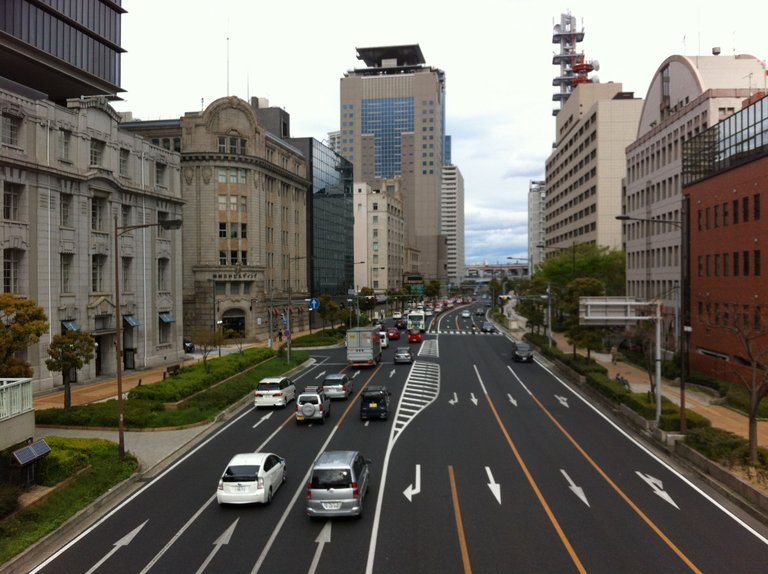Japan has a reputation for being an incredibly safe country, and in terms of violent crime it certainly is. At 0.2 murders per 100,000 people, it has the lowest homicide rate in the world. If you travel to Japan, chances are low that you will bear witness to any theft, violent physical assaults, or shootings.
With that said, there are certain types of crime that are unique to Japan, a lot of which goes unreported. This post will cover why some types of crime are so rare in Japan, while others are more rampant.
Vandalism
If you walked along the streets of Tokyo, you would likely be surprised by how clean the environment is. Despite the fact that there are no public garbage bins to be found, you will not see candy wrappers, chip bags or cigarette butts littered throughout the city. The buildings are in good shape too, free of graffiti and smashed-in windows.
In most North American cities you will find garbage bins at almost every corner. Despite that, many neighborhoods are littered with garbage anyway. Moreover, a lot of building edifices are covered with spray paint and often have shattered windows.
Even though most westerners are aware that vandalism is a crime, it's often portrayed in movies and TV shows as normal, and even cool behavior.

Over time vandalism and littering has been subconsciously accepted in western society, and it has been reinforced subliminally not only by the media, but by people seeing it constantly in their physical environment. On a conscious level we know that vandalism is wrong, but it has become ingrained into our minds as something that is basically tolerated by society.
In Japan vandalism isn't acted out in the media, and the physical surroundings are always in good condition, so the people know at a subconscious level that this behavior is unacceptable and the city must be kept clean and tidy. For example, look at Kobe city in Hyogo prefecture.

Theft
In Japan people don't need to chain their bikes to lamp posts, bike racks, or telephone poles. Instead, they simply turn a key on the bike that prevents the wheels from spinning.
In theory, someone could easily drive by, toss one of these "locked" bicycles into the back of their truck, and take off. But the reality is that no Japanese person in their right mind would do this.
Why?
First and foremost, petty theft is not considered as an alternative source of income in Japan, unlike in the west where that subculture exists. Secondly, the culprit would actually be shamed and ostracized by their fellow citizens for committing robbery.
Also consider the law of attraction, which states that whatever we focus our attention on will get bigger over time. In the west we are constantly reminded that theft is an ever present threat in our cities. You will often see signs at cafes, gyms and libraries warning you to watch your personal belongings.

These signs are intended to deter theft, but in reality they make the problem worse.
Think about how the people who see these signs are constantly reminded that robbery is a problem in their city. In effect, theft becomes normalized and accepted at a subconscious level. The more signs that get put up about theft and the more people talk about it, the more ingrained into the culture it becomes.
Since we consider it normal, theft often occurs without punishment. We simply tolerate it, and in some cases even provide assistance to the people who commit these crimes instead of disciplining them.
Physical Assaults
In the west we have a problem with recurring physical and verbal assaults. In an attempt to deter this type of crime there are signs on trains and buses saying assaults won't be tolerated.

What are people going to imagine when they see a sign like this? Likely they'll think of someone physically or verbally assaulting a transit officer.
From a Japanese person's perspective, assaulting a transit officer is such a foreign concept that there's no need to post such a sign. For them it goes without saying that such behavior is unacceptable.
In Japan they have a different issue - men groping women on crowded trains (チカン - chikan).

To combat this problem, the authorities post signs like this and make constant announcements telling people that groping a stranger on the train is a crime and forbidden. From a westerner's perspective this is obvious and doesn't need to be plastered on the walls and repeatedly announced over the intercom.
These signs and announcements only reinforce the behavior within the local area. Recall the law of attraction - you attract whatever you think about, even if it's in the negative form.
In Closing
Crime in Japan is low by western standards, but they do struggle with their own unique misdemeanors. Theft and violent physical assaults are quite rare, but groping is a common, often unreported incident.
Campaigns in both societies to stop physical assaults are ineffective and actually counter-productive. When the people are constantly reminded of a certain type of crime, it becomes ingrained into their minds and eventually normalized by society at a subconscious level.
Even though we fight against these crimes on a conscious level, they become more entrenched in our minds with every anti-crime ad we see. The best way to eliminate undesirable behavior is to divert people's attention away from it and have them focus on the desired behavior instead.
Sources:
https://worldpopulationreview.com/country-rankings/gun-deaths-by-country
https://wowxwow.com/guest-blog/anthony-ausgang-gb2/attachment/aausgang-terminator-2-graffiti
https://blog.goo.ne.jp/zen5rou/e/7a1035304461171c47e5bf16254f4e63
Your content has been voted as a part of Encouragement program. Keep up the good work!
Use Ecency daily to boost your growth on platform!
Support Ecency
Vote for Proposal
Delegate HP and earn more
Very interesting perspective on crime. It would definitely interesting to see an experimental model of modeling good behavior without mentioning bad behavior.